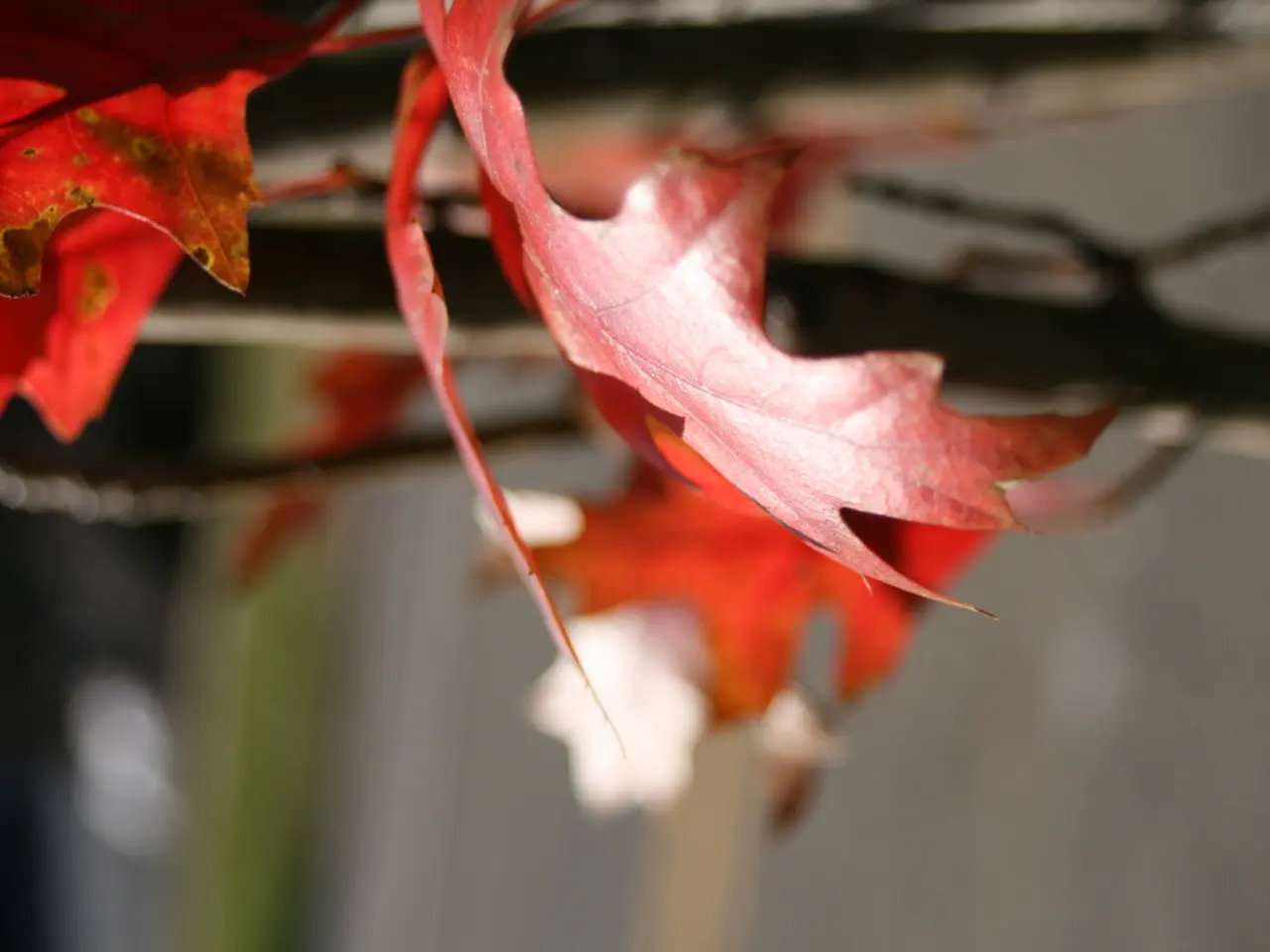Maple Tree Gall Nuts found in Ohio
In the world of gardening, one common issue that arises with maple trees is the appearance of unusual growths on their leaves - these are known as maple leaf galls. These galls, which can be found in various forms such as maple bladder galls and maple spindle galls, are primarily caused by tiny mites that induce abnormal plant tissue growth.
Maple bladder galls, initially appearing as small green bumps on the leaves of silver and red maples, later turn bright red. These galls are caused by the small eriophyid mite, Vasates quadripedes (Shimer). On the other hand, maple spindle galls form as slender, finger-like projections rising from the upper surfaces of sugar maple leaves. These galls are the work of the mite, Vasates aceriscrumena (Riley).
The life cycle of these mites begins early during leaf development. As they feed internally, the leaf growth is disrupted, leading to the formation of galls. Once the gall is formed, the mites live inside, creating a protective structure and feeding site.
Control of these gall mites is generally impractical due to the timing of mite infestation and gall formation. Applications of insecticides and miticides should be made precisely when the new leaf buds are opening, but the window of opportunity is very short, and most sprays have little, if any, effect.
Preventative measures can help reduce gall mite populations. Proper fertility and adequate moisture can encourage plant health, making it more difficult for the mites to establish themselves. Pruning out affected branches and twigs can also help in controlling the gall mite population.
It's essential to note that, apart from their aesthetic damage and possible early leaf drop, maple leaf galls seldom, if ever, cause permanent injury to a tree. Some species of maples, such as Norway maples and certain cultivars with outstanding red or yellow leaf color, are resistant to these gall mites and midges.
Dormant oils can be effective in killing overwintering stages of certain gall mites, but they are discouraged for use on maples due to potential leaf and twig damage unless the tree is truly dormant.
Finally, it's crucial to always read and follow the pesticide label when using systemic pesticides to ensure safe and effective use. With a better understanding of maple leaf galls and their causes, gardeners can take proactive steps to maintain the health and beauty of their maple trees.
In the broader context of health-and-wellness and environmental-science, the presence of maple leaf galls can be an indicator of soil and plant imbalance, as these galls are primarily caused by tiny mites that thrive in less-than-ideal conditions.
The significance of studying maple leaf galls extends beyond gardening. For instance, researchers in the field of science can explore the relationship between these galls, the mites causing them, and the potential impact on soil nutrition and fitness-and-exercise, as maple trees play a crucial role in the ecosystem, providing oxygen and contributing to carbon sequestration.
By understanding the life cycle and behavior of these mites, advances in solving the problem of maple leaf galls could lead to insights in the field of nutrition, potentially shedding light on the exotic world of microscopic organisms and their influence on plant health and growth.





